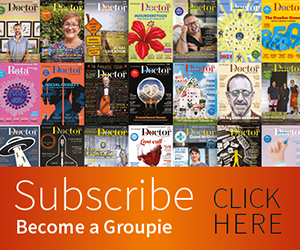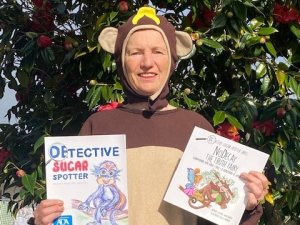Respiratory physician Lutz Beckert considers chronic obstructive pulmonary disease management, including the prevention of COPD, the importance of smoking cessation and pulmonary rehabilitation, and the lifesaving potential of addressing treatable traits. He also discusses the logic of inhaler therapy, moving from single therapy to dual and triple therapy when indicated, as well as other aspects of management
The uneven progress in dentistry …and how inequities persist despite strategy and funding
The uneven progress in dentistry …and how inequities persist despite strategy and funding

Making oral healthcare free and improving clinical quality are essential but, by themselves, will not address unjust and unfair differences in outcomes for Māori, writes Gabrielle Baker
Removing cost barriers is only one of the steps that need to be taken by the health system
There are stories still shared within my family of what it must have been like in 1912, the year my maternal grandfather Wally was born, shortly after his family left Scotland because of extreme poverty.
The stories of them eventually arriving and making a life in Timaru, then Wellington, are also stories of poverty, of the hard work of scraping by – especially without a social welfare system – and making a better life. The moral of these stories, implicitly, is how much better off everyone in New Zealand is now.
This is of course a fiction. The benefits of “progress” have not been felt equitably – or even equally – by everyone. And one area where this is painfully true is in oral health.
This quote, from a New Zealand dental conference in 1912, reinforces the socioeconomic divide at the time: “[It] is a well-known fact amongst the dental profession that there are unfortunately two kinds of dentistry being practised, viz, conservative dentistry, which the well-to-do people can afford to indulge in, and secondly what is commonly known as destructive dentistry, which the poor can only afford to obtain.”1
Dentistry involving anything other than pulling teeth was a luxury reserved for the rich.
It is confronting to think that this quote could be just as valid today. We have had 111 years to do better.
And in a tangible way we have done better, in that we have an oral health system. Some important parts of dental care are provided free to everyone up to 18, at least in theory, through both the Community Oral Health Service and through private providers who are reimbursed by the Government.
However, whenever anyone scratches beneath the surface, the inequities in these arrangements leak out. And, unsurprisingly, as our data improved in the health sector, it became evident that socioeconomic status isn’t the only thing at play.
In 2003, the Public Health Advisory Committee told the Government: “Clear inequalities exist in the oral health of New Zealand children, especially among Māori and Pacific children and those from low socioeconomic status families.”
A lack of equipment and buildings, and outdated models of care, were deemed at least partly to blame for the situation in the early 2000s. A new government strategy, Good Oral Health for All for Life, was released in 2006 along with significant infrastructure funding. But the inequities remain today.
The Ministry of Health website shows that, in 2022 only 38 per cent of Māori five-year-olds were free from dental caries, compared with 56 per cent of all in that age group.
It is as though making something free and improving the clinical quality of services, as essential as these are, will not by themselves address the unjust and unfair differences in oral health between Māori and non-Māori, non-Pacific groups.
Outside of the last resort provided by Work and Income, or ACC where it relates to an injury, adults must pay for their own oral healthcare. In the New Zealand Health Survey, Māori adults are less likely than European/Other adults to say their oral health is good or better than good. In 2019/20, Māori adults were more likely to have unmet need for dental care due to cost.
Where you live also directly impacts how available oral healthcare is to you. For example, according to the Association of Salaried Medical Specialists, there are three times more dentists per capita in Auckland than on the West Coast.
If you want to use a kaupapa Māori oral health service, your options are severely limited, with only around seven available in the entire country. Even then, not all of these services provide oral care for adults.
Amid high political interest and public discussion on oral healthcare this election year, it is not surprising a political party – the Greens – has identified this as an election promise, funded by changes to the tax system.
Certainly, it seems a no-brainer to me that making oral health appointments cheaper or free for adults is a necessary step if we are committed to equitable health outcomes for Māori, Pacific, and all populations for whom cost is a significant barrier to appropriate dental care.
But removing cost barriers is only one of the steps that need to be taken by the health system. We also need to think about the way oral health fits into comprehensive primary and community healthcare, how a culturally and clinically safe workforce of oral health professionals (not just dentists) can be built and developed, how services can reach rural and remote communities, how fluoridation and other public health measures can provide better oral health protection, and – critically – how kaupapa Māori oral health services are better supported as a viable option for Māori across Aotearoa.
I didn’t get a chance to know Wally as an adult. But I know he would have been all for saving money on what is an essential service to maintain our health and wellbeing. Being careful with every cent was in his DNA.
He would have had a personal interest too. Wally eventually became part of the New Zealand Dental Corps in World War II. The Dental Corps (established during World War I) is often seen as the start of organised oral healthcare in New Zealand, directly leading to the establishment of the then School Dental Service.
Wally was a dental mechanic, a career he carried on until the 1980s. This would have been an incredible boon, serving as justification for starting a new life on the other side of the world. As a kid, I could see this directly in the sheer number of dentures in my extended family. I’ve also heard that my mother as a child would borrow Wally’s tools to give free dental examinations to her cousins, embedding a lifetime phobia of dentists – a perhaps unintended and unforeseen consequence of his trade.
Gabrielle Baker (Ngāpuhi, Ngāti Kuri) is an independent health policy consultant
We're publishing this article as a FREE READ so it is FREE to read and EASY to share more widely. Please support us and our journalism – subscribe here
One of the benefits of subscribing is you will also be able to share your thoughts about what you read with other in our Comment Stream. You can also take notes on what you read with Capture


![Green Party co-leader Marama Davidson [Image: Niva Chittock, RNZ]](/sites/default/files/styles/cropped_image_4_3/public/2023-08/4L4PBA6_davidson_jpg.jpg?itok=OzjARhgJ)




![Barbara Fountain, editor of New Zealand Doctor Rata Aotearoa, and Paul Hutchison, GP and senior medical clinician at Tāmaki Health [Image: Simon Maude]](/sites/default/files/styles/thumbnail_cropped_100/public/2025-03/Barbara%20Fountain%2C%20editor%20of%20New%20Zealand%20Doctor%20Rata%20Aotearoa%2C%20and%20Paul%20Hutchison%2C%20GP%20and%20senior%20medical%20clinician%20at%20T%C4%81maki%20Health%20CR%20Simon%20Maude.jpg?itok=-HbQ1EYA)
![Lori Peters, NP and advanced health improvement practitioner at Mahitahi Hauora, and Jasper Nacilla, NP at The Terrace Medical Centre in Wellington [Image: Simon Maude]](/sites/default/files/styles/thumbnail_cropped_100/public/2025-03/2.%20Lori%20Peters%2C%20NP%20and%20advanced%20HIP%20at%20Mahitahi%20Hauora%2C%20and%20Jasper%20Nacilla%2C%20NP%20at%20The%20Terrace%20Medical%20Centre%20in%20Wellington%20CR%20Simon%20Maude.jpg?itok=sUfbsSF1)
![Ministry of Social Development health and disability coordinator Liz Williams, regional health advisors Mary Mojel and Larah Takarangi, and health and disability coordinators Rebecca Staunton and Myint Than Htut [Image: Simon Maude]](/sites/default/files/styles/thumbnail_cropped_100/public/2025-03/3.%20Ministry%20of%20Social%20Development%27s%20Liz%20Williams%2C%20Mary%20Mojel%2C%20Larah%20Takarangi%2C%20Rebecca%20Staunton%20and%20Myint%20Than%20Htut%20CR%20Simon%20Maude.jpg?itok=9ceOujzC)
![Locum GP Helen Fisher, with Te Kuiti Medical Centre NP Bridget Woodney [Image: Simon Maude]](/sites/default/files/styles/thumbnail_cropped_100/public/2025-03/4.%20Locum%20GP%20Helen%20Fisher%2C%20with%20Te%20Kuiti%20Medical%20Centre%20NP%20Bridget%20Woodney%20CR%20Simon%20Maude.jpg?itok=TJeODetm)
![Ruby Faulkner, GPEP2, with David Small, GPEP3 from The Doctors Greenmeadows in Napier [Image: Simon Maude]](/sites/default/files/styles/thumbnail_cropped_100/public/2025-03/5.%20Ruby%20Faulkner%2C%20GPEP2%2C%20with%20David%20Small%2C%20GPEP3%20from%20The%20Doctors%20Greenmeadows%20in%20Napier%20CR%20Simon%20Maude.jpg?itok=B0u4wsIs)
![Rochelle Langton and Libby Thomas, marketing advisors at the Medical Protection Society [Image: Simon Maude]](/sites/default/files/styles/thumbnail_cropped_100/public/2025-03/6.%20Rochelle%20Langton%20and%20Libby%20Thomas%2C%20marketing%20advisors%20at%20the%20Medical%20Protection%20Society%20CR%20Simon%20Maude.jpg?itok=r52_Cf74)
![Specialist GP Lucy Gibberd, medical advisor at MPS, and Zara Bolam, urgent-care specialist at The Nest Health Centre in Inglewood [Image: Simon Maude]](/sites/default/files/styles/thumbnail_cropped_100/public/2025-03/7.%20Specialist%20GP%20Lucy%20Gibberd%2C%20medical%20advisor%20at%20MPS%2C%20and%20Zara%20Bolam%2C%20urgent-care%20specialist%20at%20The%20Nest%20Health%20Centre%20in%20Inglewood%20CR%20Simon%20Maude.jpg?itok=z8eVoBU3)
![Olivia Blackmore and Trudee Sharp, NPs at Gore Health Centre, and Gaylene Hastie, NP at Queenstown Medical Centre [Image: Simon Maude]](/sites/default/files/styles/thumbnail_cropped_100/public/2025-03/8.%20Olivia%20Blackmore%20and%20Trudee%20Sharp%2C%20NPs%20at%20Gore%20Health%20Centre%2C%20and%20Gaylene%20Hastie%2C%20NP%20at%20Queenstown%20Medical%20Centre%20CR%20Simon%20Maude.jpg?itok=Z6u9d0XH)
![Mary Toloa, specialist GP at Porirua and Union Community Health Service in Wellington, Mara Coler, clinical pharmacist at Tū Ora Compass Health, and Bhavna Mistry, specialist GP at Porirua and Union Community Health Service [Image: Simon Maude]](/sites/default/files/styles/thumbnail_cropped_100/public/2025-03/9.%20Mary%20Toloa%2C%20Porirua%20and%20Union%20Community%20Health%20Service%20in%20Wellington%2C%20Mara%20Coler%2C%20T%C5%AB%20Ora%20Compass%20Health%2C%20and%20Bhavna%20Mistry%2C%20PUCHS%20CR%20Simon%20Maude.jpg?itok=kpChr0cc)